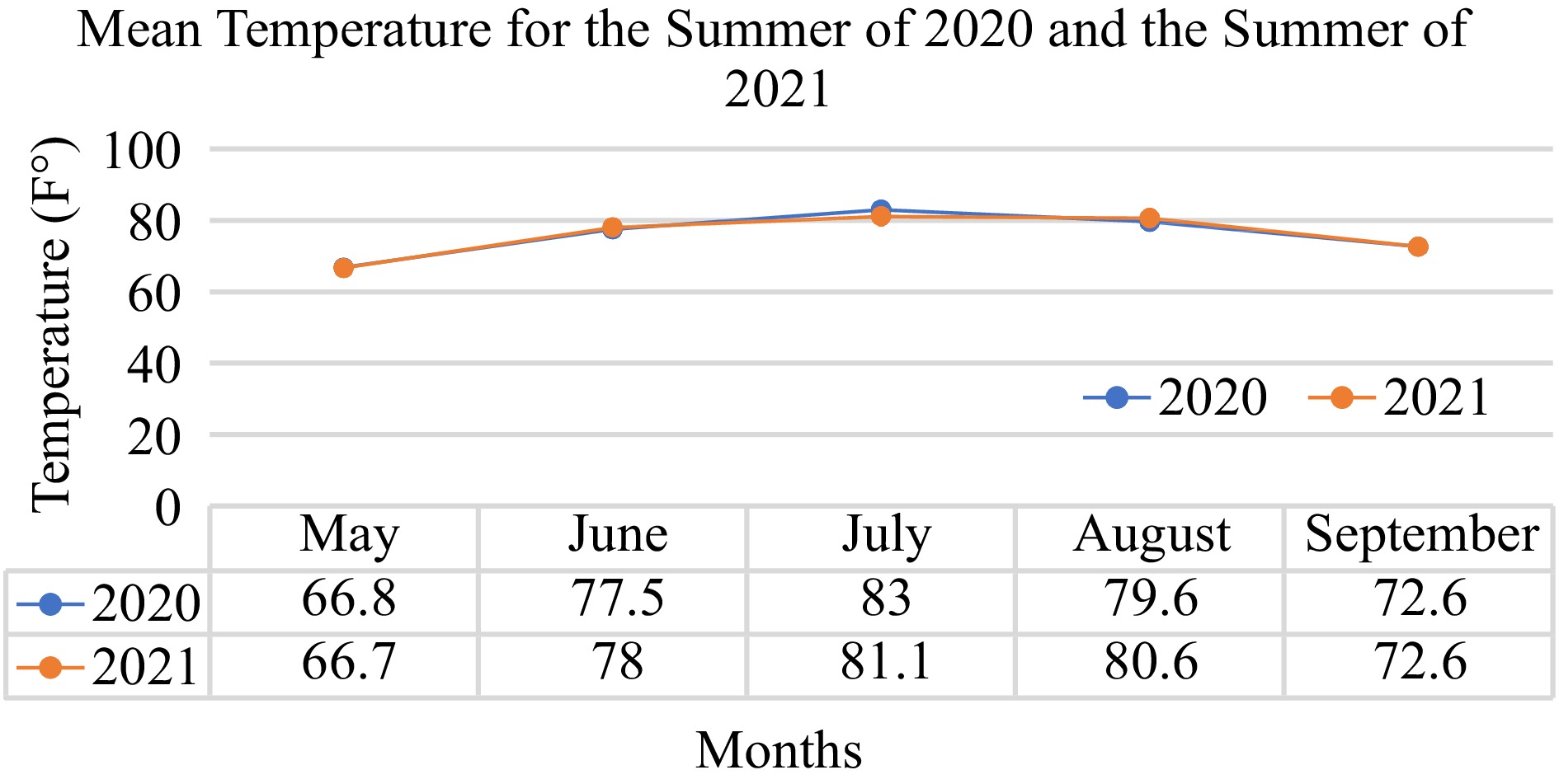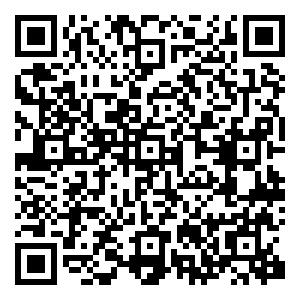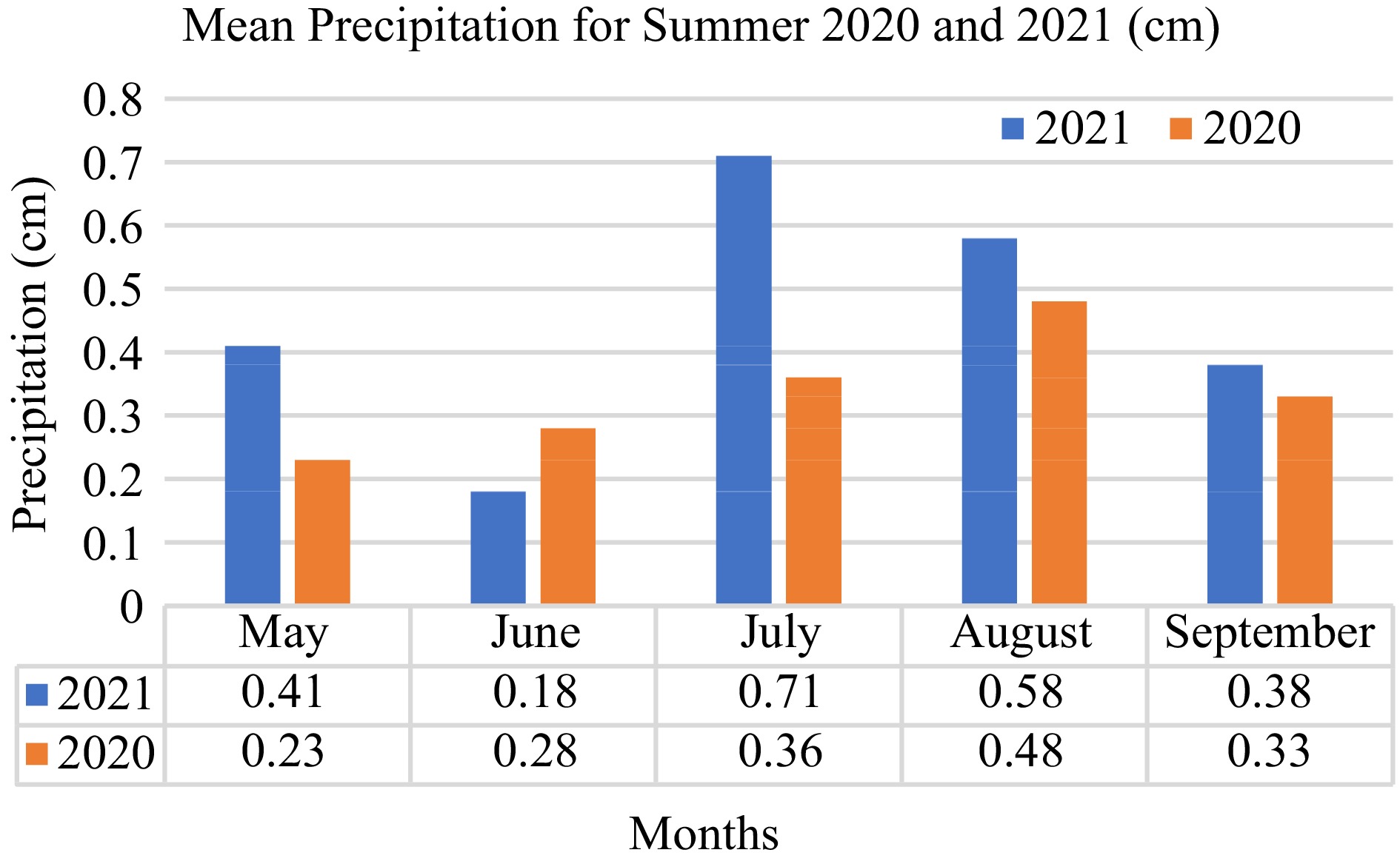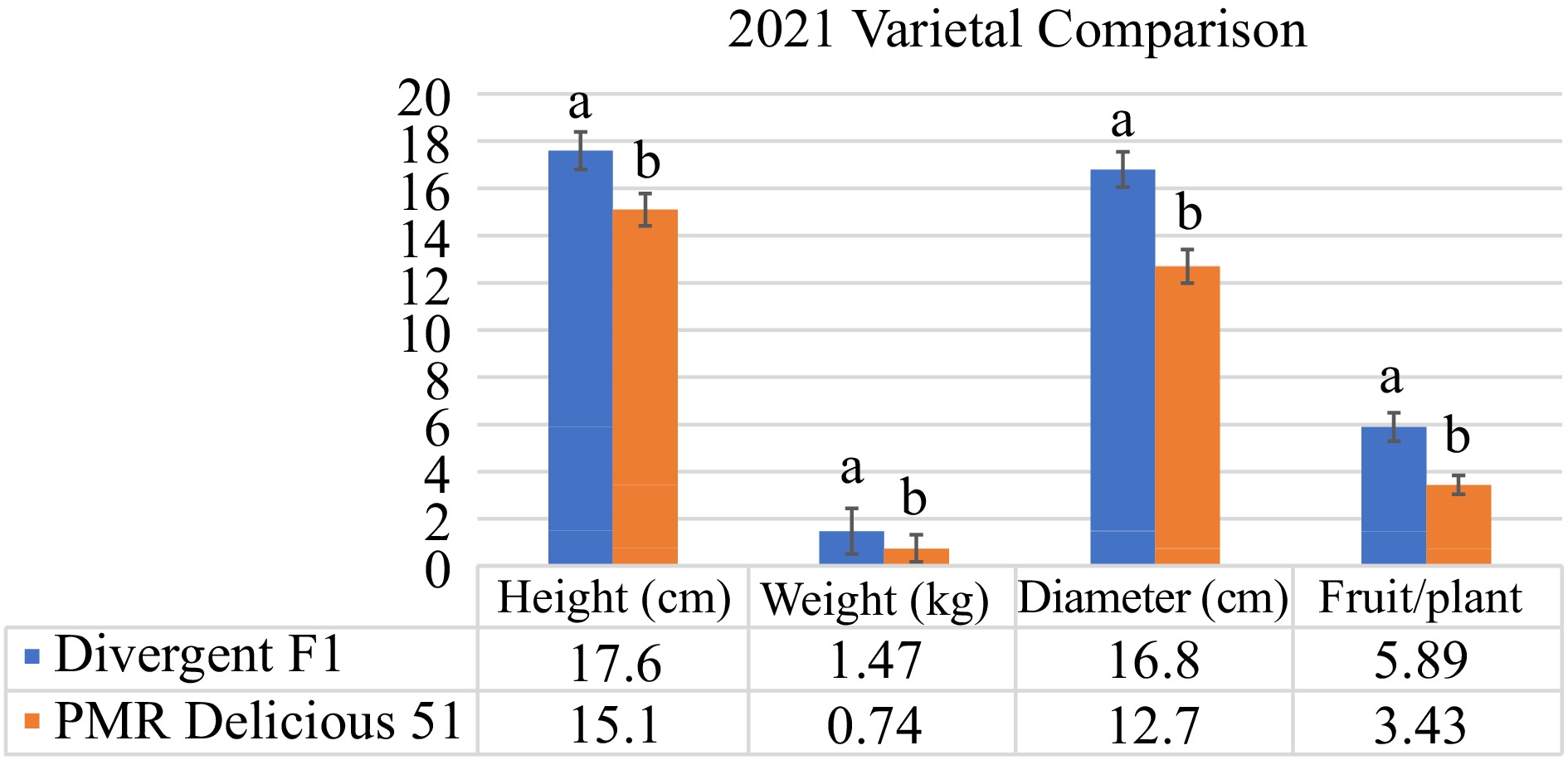-
Organic agriculture is a production technique that enhances biodiversity and produces healthy soils by avoiding the use of chemicals, hence maintaining the health of an agroecosystem[1]. Since the Organic Foods Production Act of 1990, the area of certified organic agriculture production in the United States has gradually risen. Advantages of organic agriculture include economic benefits for producers and increased provision of ecosystem services such as biological pest control and biodiversity conservation have been shown[2,3]. However, organic cropping systems must face two main challenges affecting soil fertility and crop yield. The first problem is to give sufficient amounts of accessible nitrogen to the crops in a timely manner, and the second is to keep weeds and pests under control. Organic farming needs to be profitable in order to be sustainable. Additionally, the financial performance of organic agriculture relative to conventional agriculture will determine whether it can continue to grow on a global scale[4]. There are some challenges for organic production. One common challenge, in regards to the soil, is nitrate leaching[5]. This issue can be addressed by crop rotation. Ideal farming conditions can vary depending on the producer’s outcome. Conventional farming and organic farming are the two common methods but have different end goals. While conventional farming, at least in the short term, maximizes yields, organic farming benefits the soil, people and wildlife[6].
Cantaloupes (Cucumis melo L.) are warm season crops that need 70 to 90 d from seeding to harvest, depending on the variety. Their consumption has increased by 11% percent since 1958[7]. Cantaloupes are exceedingly delicate to cool temperatures. Growth will be severely restricted if left bare to cool temperatures (50 °C or less) for brief periods of time during the growing season. Plants will survive, but their growth rate and fruit set rate per plant will worsen[8]. Cantaloupe is a commercially important crop in many countries, being cultivated in all temperate regions of the world in part due to its good adaptation to soil and climate. Cantaloupe is an extremely fragile commodity; even if harvested, managed, and held under ideal conditions, the fruit will retain good quality for only about two weeks after the harvest[9].
Over the past few decades, biostimulants have been of great interest in agricultural and horticultural sciences among growers, researchers and the scientific community worldwide. They were demonstrated to be a successful contributor to improving soil quality. Soil quality and health depend on soil's physical, chemical, and biological properties[10]. A plant biostimulant is any substance or microorganism applied to plants to boost nutrition efficiency, abiotic stress tolerance, and crop quality traits, regardless of its nutrient content[11]. Humic substances (HSs) are deemed biostimulants. Humic substances are the main natural component of soil organic matter produced from the decomposition of dead cell materials by microorganisms[12]. Humic substances include humic acids, fulvic acids, and humins[13]. Humic substances impact the composition of the microbial community and affect soil fertility. The action of soil enzymes represents the metabolism in the soil, which in turn reflects the nutrient uptake and growth of plants[14]. HSs have indirect effects (growth in fertilizer efficiency or shrinking soil compaction) or direct (improvement in the overall plant biomass) effects on plant growth. Humic substances can improve the root growth and uptake of nutrients such as N, Fe, P, K, Ca, Zn, and Mg and enhance tolerance to abiotic stresses such as salinity and drought. The unpredictability in effects of HSs is due to the source of the HSs, the environmental conditions, the receiving plant, and the dose and manner of HS application[15]. Fulvic acids (FAs) are soluble in the whole pH range. They can pass through biological or artificial membrane systems micropores while humic acids cannot, with larger molecular weights ranging to a few thousand Daltons[16]. The evaluation of humic substances and biochar used in the production of organic cantaloupe is presented in this paper.
-
This research was conducted at Tennessee State University's organic agriculture laboratory and certified organic farm in Nashville, Tennessee, USA (Latitude 36°10' N Longitude 86°49' W) in the spring-summer of 2020 and 2021. The average temperature and mean precipitation is displayed in Figs 1 & 2.

Figure 1.
Temperature readings for the 2020 and 2020 summer season in Nashville, Tennessee, USA[17].
Experimental design
-
Organic seeds were obtained from a certified organic vendor named High Mowing Seeds Company (Wolcott, VT, USA). The organic varieties selected were PMR Delicious 51 and Divergent F1. Seeds were sown in 72 cell seed trays that were filled with Harvest Organics Natural and Organic Raised Bed Mix (aged pine bark 55% and peat moss 45%). For four weeks, standard nursery methods were followed until the plants were transplanted to the field. These methods included growing the seedlings in optimum 24−29 °C temperature and keeping the soil moist but not waterlogged because that could lead to root rot. Next, the seedlings were hardened off by exposing them to outside conditions for a week before transplanting. Cover crops, hairy fetch mix and peas and oats mix, were planted during the offseason prior to trials. The field was prepped by disking and tilling with a tractor two weeks before transplanting. Field experiments were arranged as a randomized complete block design (RCBD) with three replicates of four treatments. For this project, the four treatments selected were humic acid (Ful-Humix; Bioag, Portland, OR, USA) and fulvic acid (Ful-Power; Bioag, Portland, OR, USA) combination (HA+FA), biochar (Premium Organic Biochar; Everson, WA, USA) (B), humic acid (FulvicXcell, BC, Canada) (HA), and control (C).
Plots were 14 m × 1 m with 1 m spacing between individual plants. Each plot contained ten plants. There was a 3.7-m space between blocks. The total square meterage of the experiment is 1,463 square meters. Raised beds were covered with plastic mulch (1.2 m wide) and used as a weed management approach since weed management is a common difficulty in organic production. A tractor with a mulch layer was utilized to assist in applying the plastic on the raised beds. Also, drip irrigation tape was placed under the plastic mulch for an irrigation system. Prior to planting, a soil test was completed by collecting samples of soil using the zig zag technique and sending to a soil analysis lab. The soil test results are displayed in Table 1. In the field, no organic herbicides were employed. To help manage weeds, manual labor and mechanical equipment were used. To suppress the cucumber beetle, Pyganic (MGK Company, Minneapolis, MN, USA) insecticide was administered at the approved amounts. The active ingredient in Pyganic is pyrethrin. All biostimulant treatments were applied based on recommended rates of the manufacturer. For the HA + FA treatment, humic acid concentration was mixed to a concentration of 30 mL/gal and fulvic acid concentration 20 mL/gal. Fulvic acid was added to every watering cycle at 100 mL/plant. HA was applied every other week according to recommendations. For the biochar treatment, 25 g of biochar was applied to each plant prior to transplant. The isolated HA treatment concentration was applied at a concentration of 30 mL/gal and was applied every other week according to recommendation. The plants were grown until their maturity (70–90 d) then were harvested.
Table 1. Soil test results for the 2020 growing season.
Pounds per acre – Mehlich 1 pH P K Ca Mg Zn Fe Mn B Na 6.13 882 V 1938 V 5327 S 344 S 13 S 28 S 212 S 2.4 89 Indices for amount of nutrients are Low (L), Medium (M), Sufficient (S), High (H), and Very High (V). Field data collection
-
Mature (full slip) fruits were hand-picked, weighed, and measured in the field. The fruit was divided into marketable and culls categories according to USDA grade standards. Only marketable fruits were represented in this research. Unmarketable fruits were marked as culls and represented 14% of yield in 2021 and 21% in 2020. Fruit height and diameter was measured using a caliper ruler. The fruit was weighed individually using a crop weight scale. Upon collecting and analyzing the field data, the results were calculated via SAS Software version 9.3 (SAS Institute, Cary, NC, USA). Two way analysis of variance (ANOVA) and GLM procedure was used to test for significance, and the significance between treatments were analyzed with least significant difference (LSD) at p < 0.05.
-
Figure 3 shows the yield data between the two selected varieties, PMR Delicious 51 and Divergent F1, for the 2021 trial. There was a significant difference between the varieties when comparing the height, weight, fruit number per plant and diameter. Divergent F1 outcomes were significantly higher than PMR Delicious in every category. Divergent F1's height was 17.6 cm compared to 15.1 cm in Delicious 51. Also, Divergent F1's mean weight (1.47 kg) and mean diameter (16.8 cm) were significantly higher than Delicious', 0.74 kg and 12.7 cm. Fruit number was consistent with the trend as Divergent F1 (5.89) produced more fruit per plant than PMR Delicious 51 (3.43).
Figure 4 shows the yield data between the two selected varieties, PMR Delicious 51 and Divergent F1, for the 2020 trial. A significant difference in height, diameter, and fruit number per plant was identified. In these cases, PMR Delicious 51 proved to have higher values than Divergent F1. However, there was no significant weight difference of the fruit between varieties, as Divergent F1 (1.89 kg) and PMR Delicious 51 (1.99 kg) produced reasonably close results. Only mean weight resulted in a non-significant value. PMR Delicious 51 generated higher values in every category.
2020 comparison between treatments and varieties
-
Statistics between the two different varieties and the four treatments showed some significance in various conditions (Table 2). For PMR Delicious 51, biochar recorded the highest height (16.92 cm), diameter (15.98 cm), and weight average (2.23 kg), followed by control (16.41 cm, 15.65 cm, 2.10 kg). HA+FA (15.90 cm) was significantly different from biochar (16.92 cm) and control (16.41 cm) but was not significantly different from HA (15.77 cm) for height. For the diameter category in PMR Delicious 51, HA+FA (15.90 cm) was significantly different from biochar (15.98 cm) and control (15.65 cm) but not significantly different from HA (15.39 cm). The mean weight category yielded exciting results as the humic substances HA+FA (1.78 kg) and HA (1.91 kg) were not statistically different. However, biochar (2.23 kg) was significantly different from the humic substances but not control (2.10 kg). For Divergent F1, there was no significant difference in the height or weight categories. Nevertheless, HA+FA only yielded a difference to biochar, but biochar was not significantly different compared to HA and control in diameter measurements.
Table 2. 2020 results of number of fruits per plant, fruit height, fruit weight, and fruit diameter in PMR Delicious 51 and Divergent F1.
Variety Treatment Fruit number /plant Fruit height Mean (cm) Diameter Mean (cm) Weight Mean (kg) PMR Delicious 51 HA + FA 3.87a 15.90ab 14.96b 1.78c HA 2.60c 15.77a 15.39ab 1.91bc B 3.13b 16.92c 15.98a 2.23a C 3.80a 16.41bc 15.65a 2.10ab Divergent F1 HA + FA 3.20a 15.98a 15.47a 1.99a HA 2.60b 15.70a 15.09ab 1.91a B 3.40a 15.29a 14.71b 1.81a C 2.20b 15.62a 14.94ab 1.83a Varieties are analyzed separately. Values are presented as means. Within each column, values followed by the same letter are not significantly different at (p ≤ 0.05). Significance at (p ≤ 0.05).
HA+FA, Humic Acid + Fulvic Acid; HA, Humic Acid; B, Biochar; C, Control.2021 comparison between treatments and varieties
-
Analytics showed significant differences in both varieties when comparing the treatments, as shown in Table 3. In the PMR Delicious 51 trial, there was a significant difference between the humic substances HA+FA (15.62 cm) and HA (14.81 cm) as HA+FA had a higher mean height value. Biochar (15.16 cm) was not significantly different from any other treatments when comparing mean height values. For diameter and weight HA+FA (13.44 cm and 0.85 kg) was significantly different from all other treatments. Also, there was no significant difference between HA (0.70 kg), biochar (0.70 kg), and control (0.70 kg) when comparing weight results. In Divergent F1, HA+FA and control were not significantly different from other treatments comparing height and weight. Biochar (17.27 cm, 16.54 cm, 1.41 kg) was significantly lower compared to HA (19.93 cm, 17.20 cm, 1.55 kg) in fruit height, diameter, and weight. For diameter in Divergent F1, humic substances valued no significance compared to each other. Lastly, the only significant difference in the mean weight category was HA (1.55 kg) and Biochar (1.41 kg).
Table 3. 2021 results of number of fruit per plant, fruit height, fruit weight, and fruit diameter in PMR Delicious 51 and Divergent F1.
Variety Treatment Fruit number /Plant Fruit height Mean (cm) Diameter Mean (cm) Weight Mean (kg) PMR Delicious 51 HA+FA 4.1a 15.62a 13.44a 0.85a HA 4.3a 14.81b 12.37b 0.70b B 2.7b 15.16ab 12.24b 0.70b C 2.5b 14.83b 12.55b 0.70b Divergent F1 HA+FA 7.7a 17.65ab 16.79ab 1.48ab HA 5.7b 17.93a 17.20a 1.55a B 5.8b 17.27b 16.54b 1.41b C 4.3c 17.63ab 16.59b 1.45ab Varieties are analyzed separately. Values are presented as means. Within each column, values followed by the same letter are not significantly different at (p ≤ 0.05). Significance at (p ≤ 0.05).
HA+FA, Humic Acid + Fulvic Acid; HA, Humic Acid; B, Biochar; C, Control. -
The application of humic substances to crops has been shown to increase crop yields. This may be the result of enhanced nutrient absorption and utilization by the plant, as well as increased tolerance to environmental stresses such as drought and high temperatures. Moreover, humic substances have been shown to improve the overall health of the soil, which can result in improved growth and development of the plant. It is essential to note, however, that the effect of humic substances on cantaloupe yield can vary based on the specific conditions of the growing environment and the application rate of the humic substances. In the 2020 experiment, Divergent F1 plants treated with humic substances produced higher values for all examined parameters, which included number of fruits, fruit height, fruit diameter and fruit weight. The 2021 trial for Divergent F1 was similar to the 2020 trial results in that humic substance-treated cantaloupe produced increased height, weight, and diameter. In addition, these results demonstrated that humic substances have a physiological effect on fruit size and yield. These results closely resemble those of Qin & Leskovar's[18] research. Their 2-year field experiment compared the yield of triploid watermelons and the soil properties under various management strategies, including the use of humic substances (HS) as organic inputs (HS vs control) and deficit irrigation as the irrigation method (50% vs 100% based on evapotranspiration). The application of humic substances increased early yield by 38.6% and total yield by 11.8% in comparison to the control. This closely relates to the increased number of fruits produced by humic substance treated cantaloupe. The effect of humic substances on the yield was further researched and produced similar results by Bezuglova et al.[19] who analyzed several humic substance variants in winter wheat production. This study discovered that winter wheat treated with humic substances achieved a significant yield increase of 7.2 hwt/ha, which corresponds to a 22.5% yield increase compared to other cultivars.
Our research focused on humic substances application by the soil drench method. A previous study conducted by Karakurt et al.[20] focused on alternate application methods of humic substances, soil and foliar, in pepper production. This study was able to discover results that were akin to ours using the soil drench method. Specifically, according to Karakurt et al. [19], soil and foliar HA treatments significantly affected pepper fruit yield and fruit weight just as the humic substances affected the number of fruit and fruit weight in our cantaloupe research. In the trial by Karakurt et al., a concentration of 20 ml/l foliar application of humic substances produced the highest yield and a foliar concentration of 10 ml/l yielded the heaviest average fruit weight. However, it did not differ significantly from foliar 20 ml/l, 30 ml/l, or soil applications.
There was a study that reviewed water deficit stress impairment of morphophysiological, and phytochemical traits of stevia buffered by humic acid application[21]. This study was one of the earliest to examine the effects of foliar spraying humic acid under frequent irrigation on growth parameters, leaf yield, and concentrations of two major compounds (stevioside glycoside) of stevia grown in arid climates. The results of the study showed that spraying humic acid at a concentration of 300 g/mL significantly improved growth parameters and quantity yield (the weights of fresh and dry leaves). However, the quality yields as well as the stevioside glycoside and rebaudioside A contents improved with increasing irrigation interval or reduced irrigation. In general, the experimental treatments produced higher quality stevioside glycoside of stevia.
Another study conducted by El-Salhy et al. examined the best inorganic N proportion applied with humic acid and/or fulvic acid as well as detecting the best N management in Superior seedless vineyards[22]. The productivity and quality of Superior seedless grape were enhanced by the application of humic or fulvic acids. The recorded highest values of yield/vine (15.17 kg/vine), cluster weight (474.9 g), 25 berries weight (92.27 g) and least cluster compactness coefficient (6.17) as an average were due to the treatment of 75% mineral-N and 25% humic acid, respectively. Under the conditions of this experiment, it is concluded that vines fertilized with 75% of the necessary nitrogen plus 25% humic acid or/and 25% fulvic acid had improved vegetative growth, nutritional status, yield and cluster attributes, and berry traits. More specifically, a study focusing on the King Ruby grape cultivar yielded similar results[23].
Compared to other research conducted on humic substances, this study yields comparable results. Humic substances can be expected to have a positive relationship with the soil and plant, resulting in increased fruit number and quality. Moreover, based on our results, we can conclude that cantaloupe variety selection generates statistically significant differences but when analyzing within the same variety, humic substances provide a significant advantage.
-
In conclusion, humic substances can provide numerous benefits for organic cantaloupe production. It is preferable, from our results, that using humic substances as biostimulants caused significant enhancements in fruit number and fruit quality. Additionally, the combination of HA+FA proves to be the best treatment strategy for Divergent F1. There is need for additional research in cantaloupe and other crops to learn more about the relationship between humic substances and plants. This will lead to a more efficient method of organic farming and an understanding of the significance of using humic substances on cantaloupe and various crops.
Dilip Nandwani received TSU Cooperative Extension grant, ZaDarreyal Wiggins for POTUS fellowship and Dafeng Hui is supported by the NSF EiR project.
-
The authors declare that they have no conflict of interest.
- Copyright: © 2023 by the author(s). Published by Maximum Academic Press, Fayetteville, GA. This article is an open access article distributed under Creative Commons Attribution License (CC BY 4.0), visit https://creativecommons.org/licenses/by/4.0/.
-
About this article
Cite this article
Wiggins Z, Nandwani D, Akaeze O, Hui D. 2023. Influence of humic substances and biochar on the yield of cantaloupe (Cucumis melo L.) in organic management systems. Technology in Horticulture 3:7 doi: 10.48130/TIH-2023-0007
Influence of humic substances and biochar on the yield of cantaloupe (Cucumis melo L.) in organic management systems
- Received: 16 April 2022
- Accepted: 27 April 2023
- Published online: 07 August 2023
Abstract: Biostimulants are biological additives that are used in crop production to improve plant growth, productivity, and health. This research aimed to study the effects of cantaloupe (Cucumis melo L.) production in organic management systems influenced by humic substances and biochar. The study was conducted in replicated research trials conducted during the 2020 to 2021 growing seasons at the Tennessee State University Organic Research Farm (TN, USA). Two organic varieties, Divergent F1 and PMR Delicious 51 were selected for the study. Three treatments included 1) humic substances, 2) fulvic acid and humic acid combination, and 3) biochar. The parameters examined were number of fruits, fruit height, fruit diameter, and fruit weight through comparisons within each variety and between two varieties. Results indicated significant variations in fruit height and fruit diameter but not in fruit weight between two varieties. Within var. PMR Delicious 51, there were significant distinctions in fruit height, fruit diameter and fruit weight for the humic substances’ treatments (HA and HA + FA) compared to biochar and control. Biochar treatment showed improved yield traits in the 2020 research trial, however humic substance combination concluded exceptional plant growth and yield in the 2021 trial. Humic substances combined and alone yielded more fruits per plant in both research trials. Significant variance in fruits per plant was recorded in var. Divergent F1 in humic substance combination which generated higher yield. Fruit diameter and fruit weight in cantaloupe treated with humic substances were higher compared to biochar in the 2021 research trial. Humic acids were observed to be effective at improving yields of var. Divergent F1 within the two research trials conducted.
-
Key words:
- Yield /
- Efficacy /
- Humic /
- Substances /
- Cantaloupes /
- Organic















